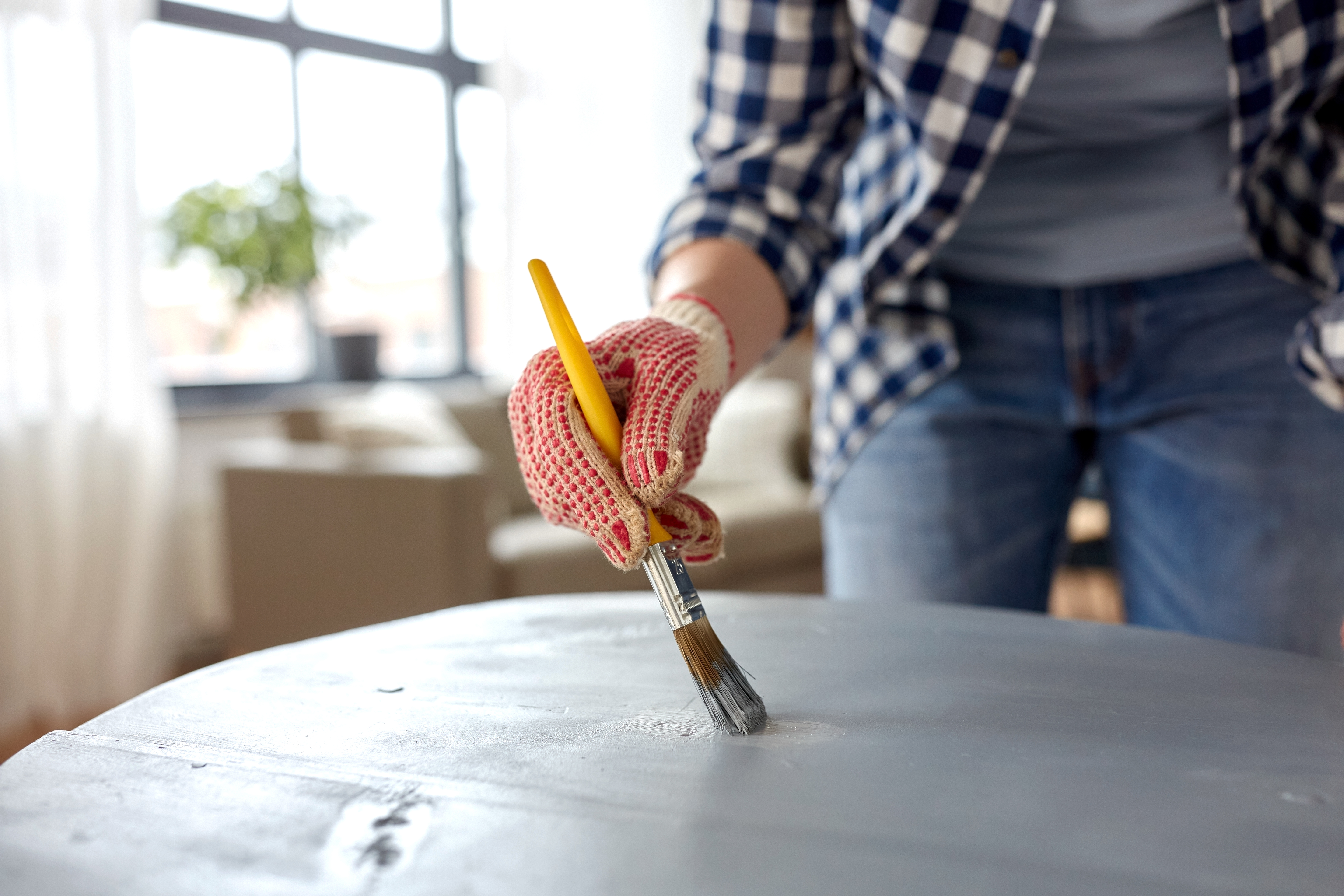Blogs

How to Paint a Dining Room Table – Durable & Stylish Finish
A dining room table isn't just a piece of furniture; it's the centerpiece of countless meals, conversations, and cherished family moments. Over time, even the most beloved table can show signs of wear, losing its luster or simply no longer matching your evolving decor. Rather than investing in a new one, learning how to paint a dining room table offers a rewarding and cost-effective way to give it a stunning new lease on life. This comprehensive guide, from crucial preparation to the final durable finish, will help you achieve professional-looking results that stand up to daily use.
Why prep matters: Sanding & cleaning
The secret to any professional-looking paint job, especially on furniture, lies in meticulous preparation. Skipping these crucial steps will inevitably lead to peeling, chipping, and an uneven finish.
Disassemble (If Possible): If your table has removable legs or a detachable top, take it apart. This makes sanding and painting easier and ensures even coverage.
Clean Thoroughly: Dust, grease, food residue, and old polish are paint repellents. Use a degreasing cleaner (like a household all-purpose cleaner or a specialized furniture cleaner) and a damp cloth to thoroughly wipe down every surface. For very greasy or sticky areas, a mild detergent solution might be needed. Rinse with a clean, damp cloth and allow to dry completely.
Repair Imperfections: Inspect the table for any dents, scratches, or gouges. Fill these with wood filler or spackle, applying with a putty knife. Allow to dry completely, then sand smooth.
Sanding – The Key Step:
Purpose: Sanding creates a "tooth" for the new paint to adhere to, ensuring a strong bond and preventing peeling. It also smooths out imperfections and creates a uniform surface.
Grit Progression:
For previously finished/glossy surfaces: Start with a medium-grit sandpaper (e.g., 120-150 grit) to scuff the existing finish and remove any loose flakes.
For raw wood or after initial sanding: Move to a fine-grit sandpaper (e.g., 180-220 grit) for a smooth finish.
Technique: Sand in the direction of the wood grain. For intricate areas or carvings, use sanding sponges or folded sandpaper.
Remove Sanding Dust: After sanding, use a shop vacuum or a dry brush to remove loose dust. Follow up with a tack cloth or a damp (not wet) microfiber cloth to pick up any remaining fine dust particles. The surface must be perfectly clean before priming or painting.
Choosing paint types for wood tables
The right paint type offers the durability and finish necessary for a high-traffic piece like a dining table.
Latex (Acrylic-Latex) Paint:
Pros: Water-based, low odor, quick drying, easy cleanup with water. Modern latex paints formulated for furniture offer good durability.
Cons: Not as hard or chip-resistant as oil-based paints without a strong topcoat. Can show brush strokes if not applied carefully.
Best For: Most DIYers. Requires a good primer and a durable topcoat for a dining table.
Oil-Based Paint (Alkyd):
Pros: Extremely durable, provides a very hard, smooth finish that resists chipping and scratching well. Excellent flow and leveling properties, meaning fewer brush strokes.
Cons: Strong odor, long drying times, cleanup requires mineral spirits, can yellow over time, especially lighter colors.
Best For: Maximum durability. Requires good ventilation.
Chalk Paint:
Pros: Creates a matte, velvety finish, requires very little prep (often no sanding or priming). Great for distressed or vintage looks.
Cons: Very porous and not durable on its own for a high-traffic surface like a dining table. Absolutely requires a strong protective topcoat (wax or polycrylic) for a dining table.
Milk Paint (True Milk Paint):
Pros: Environmentally friendly, zero VOCs, creates a super-matte finish that can chip naturally for an authentic antique look (or bonded for less chipping).
Cons: Requires mixing from powder. Like chalk paint, it's not durable on its own and requires a topcoat.
Best For: Achieving an authentic antique or distressed finish.
Recommendation for Dining Tables: For most DIYers, a high-quality acrylic-latex paint designed for cabinets or trim, paired with an excellent primer and a durable clear topcoat, is a great choice. If maximum durability is the absolute priority and you can manage the odor/cleanup, oil-based paint is a solid option. If you love the look of chalk or milk paint, be prepared for extra steps in sealing.
Proper priming and sealing techniques
Primer and sealer are critical protective layers for your painted dining table.
Priming:
When to Prime:
Always prime raw wood: Seals the wood, prevents tannin bleed, and provides adhesion.
Changing color drastically: Especially from dark to light.
Painting over glossy finishes: Provides a surface for new paint to grip.
Painting over stains/knots: Use a shellac-based or oil-based stain-blocking primer.
Application: Apply one or two thin, even coats of a high-quality furniture or multi-purpose primer using a good quality brush or foam roller. Allow each coat to dry completely according to manufacturer instructions. Lightly sand with fine-grit (220+) sandpaper between coats if recommended, and wipe off dust.
Sealing (After Painting, Before Topcoat for Chalk/Milk Paint):
If using chalk or milk paint, you'll apply a specific wax or clear coat before your final durable topcoat. This initial sealer helps protect the softer paint layer.
Top coats for durability & cleanability
This is arguably the most critical step for a dining table, which faces spills, scratches, and daily wear.
Polyurethane:
Type: Oil-based or water-based. Oil-based is very durable but yellows over time, especially light colors. Water-based (polycrylic) is clear, dries faster, and is less durable but still strong.
Pros: Excellent durability, scratch resistance, and moisture protection.
Cons: Can be challenging to apply without bubbles or streaks if not careful. Oil-based has strong fumes.
Application: Apply 2-3 thin, even coats using a high-quality brush or foam applicator. Allow ample drying time between coats. Lightly sand with 220+ grit sandpaper between coats (dust removal is crucial!).
Polycrylic:
Type: Water-based clear coat.
Pros: Dries crystal clear, fast drying, low odor, easy cleanup. Less prone to yellowing than oil-based polyurethane.
Cons: Slightly less durable than oil-based polyurethane for extreme heavy use, but still very robust for a dining table.
Application: Similar to polyurethane – 2-3 thin coats, light sanding between, dust removal.
Water-Based Varnishes/Topcoats:
Pros: Durable, clear, low odor.
Cons: Can vary in hardness; check product specifications.
Recommendation: For a dining table, polycrylic is often the preferred choice for its clarity, ease of use, and strong protection. Aim for at least 3-4 thin coats for optimal durability on the tabletop.
Design tips: Two-tone and distressed finishes
Beyond a single solid color, consider these popular techniques to add character to your dining table.
Two-Tone Finish:
Concept: Painting the tabletop one color and the base/legs another.
Popular Combos: White or light-colored base with a stained or dark-painted top; a colorful base with a neutral top.
Execution: Paint the base first. Use painter's tape to create a clean line where the top meets the base if needed. Take care when flipping the table to avoid damaging fresh paint.
Distressed/Shabby Chic Finish:
Concept: Creating an aged, worn look by sanding through layers of paint or strategically chipping paint.
Techniques:
Wet Distressing: After painting and before the topcoat, use a damp cloth or fine-grit sandpaper to gently rub away paint along edges and raised areas where natural wear would occur.
Dry Brush: Apply very little paint to a dry brush and lightly skim it over the surface for a textured, aged look.
Glazing: Apply a tinted glaze over a base color to create depth and an antique patina.
Consideration: This style works best with specific interior design themes (farmhouse, cottage, vintage). Always apply a protective topcoat to seal the distressed finish and ensure durability.
Painting a dining room table is a transformative project that allows you to customize a cherished piece to perfectly fit your home. With careful preparation, the right paint, and a durable topcoat, your newly painted table will be ready for years of family gatherings and celebrations. If you're looking to refresh your dining room or any other space with a professional touch, Masterpiece Painter offers expert painting services that guarantee stunning, long-lasting results.
Ready to revitalize your dining space? Contact Masterpiece Painter today for a consultation and bring your vision to life!
About Masterpiece Painter
For over 17 years Masterpiece Painter, has been serving communities all around New England. Let us help you make your wishes come true by turning your property into a Masterpiece
Get a Quote

© copyright 2023 All Rights Reserved.



